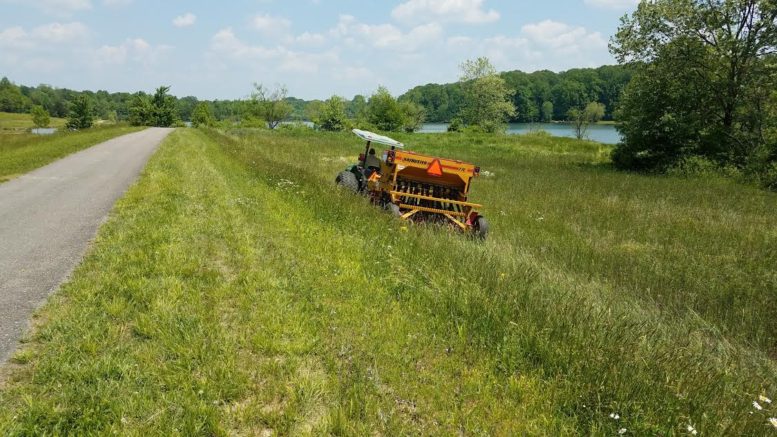Pollinator fields to bloom at Cane Creek Park
Trail users at Cane Creek Park will soon see big changes around the north side of the lake.
Three pollinator fields, totaling just over three acres, were recently planted to provide sanctuaries for bees, butterflies, moths, beetles, hummingbirds and other tiny pollinators.
“The idea of planting fields of native grasses and flowers has been discussed for a number of years within our department,” Cookeville Leisure Services Director Rick Woods said.
Thanks to some community partners – U.S. Fish and Wildlife Service, Tennessee Wildlife Resources Agency, Putnam County Soil Conservation District, Putnam County Master Gardeners and U.S. Department of Agriculture Natural Resources Conservation Service – the idea has become a reality.
“This partnership allowed us to develop a specific plan of action to establish these pollinator fields,” Woods said. “I couldn’t be more grateful to these agencies for their expertise and resources.”
The purpose of the project was to establish a habitat for pollinators while also educating the public on their value.
The fields will also add interest and beauty to the landscape in underutilized areas of the park, although it could take a couple of years for them to mature and reach peak attractiveness.
Nancy Snope of the Putnam County Master Gardeners, who has been involved in educational signage in the park and community outreach, stressed the importance of pollinators.
“Plants need pollinators, and people need plants,” she said. “One out of every three bites we eat is made possible by a pollinator, and 80 percent of all flowering plants rely on pollinators for survival. The security and stability of our food sources and ecosystems are dependent on healthy pollinator populations. We can help protect pollinators by creating habitats and educating the public on the risks facing pollinators and ways everyone can help.”
The seed mix, provided by USFWS and planted by TWRA, included perennial grasses as well as annual and perennial wildflowers native to Middle Tennessee.
Todd Shaw, USFWS fish and wildlife biologist, said, “Citizens will be able to learn to identify which local plants are important to pollinators and have a better understanding of pollinator diversity.”
TWRA will help maintain the fields.
“Many people are concerned with the decline of native pollinators, including monarch butterflies,” Michael McCord, TWRA wildlife habitat biologist, said. “Our grassland songbirds are experiencing steep declines as well. Some want to point to declines in various species of milkweed as the cause of monarch decline, but the fact is we’ve converted 97 percent of our native grasslands to some other land use. It should come as no surprise, then, that we are experiencing ecosystem collapses at only 3 percent capacity.”
Snope said that as native landscapes continue to disappear, parks such as Cane Creek Park play a vital role in their preservation and restoration.
“This project is planting ‘seeds of knowledge’ to those visiting the pollinator fields,” she said. “I foresee many more pollinator-friendly habitats springing up in our community in the near future.”
Photo:
Seeds are planted for three pollinator fields at Cane Creek Park.

